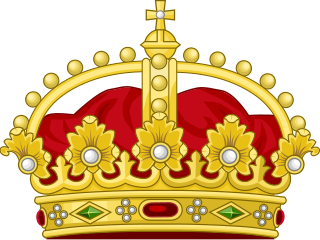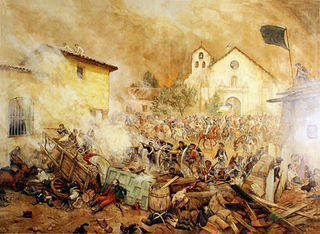
Shining Force: The Legacy of Great Intention, is a 1992 fantasy turn-based tactics role-playing video game for the Mega Drive/Genesis console. While primarily a traditional fantasy-themed game, it contains some science fiction elements.

HeroQuest, sometimes written as Hero Quest, is an adventure board game created by Milton Bradley in conjunction with the British company Games Workshop. The game was loosely based around archetypes of fantasy role-playing games: the game itself was actually a game system, allowing the gamemaster to create dungeons of their own design using the provided game board, tiles, furnishings and monsters. The game manual describes Zargon/Morcar as a former apprentice of Mentor, and the parchment text is read aloud from Mentor's perspective.

Dragon Quest VI: Realms of Revelation is a role-playing video game developed by Heartbeat and published by Enix for the Super Famicom as a part of the Dragon Quest series and as the last Dragon Quest game in the Zenithia trilogy. It was released in Japan in December 1995, developed by Heartbeat; whereas the previous Dragon Quest games were developed by Chunsoft. In 2011, a remake of the game, along with Dragon Quest IV and Dragon Quest V, was released worldwide for the Nintendo DS, making this the first time the game was released in English. Another version of the game for Android and iOS devices was released in Japan in June 2015.
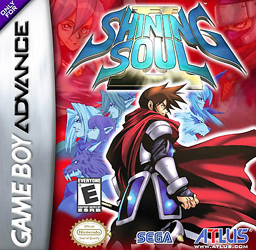
Shining Soul II is an action role-playing game for the Game Boy Advance. It was developed by Nextech and Grasshopper Manufacture and published by Sega in 2003 (Japan), THQ and Atlus, as the sequel to Shining Soul and part of the Shining series.

Lufia & the Fortress of Doom, known as Estpolis Denki in Japan, is a role-playing video game developed by Neverland and published by Taito in 1993, for the Super Nintendo Entertainment System. It is the first title in the Lufia series of video games and the only game from the series released under the Taito label in North America.

Fatal Labyrinth, titled Shi no Meikyuu: Labyrinth of Death (死の迷宮) in Japan, is a role-playing video game developed and published by Sega. Originally available exclusively on the Sega Meganet multiplayer gaming service in 1990, it was later remade for the Sega Genesis in 1991. The game appears in Sonic's Ultimate Genesis Collection for Xbox 360 and PlayStation 3. The game was also released for Microsoft Windows on September 13, 2010. The game is similar to and shares assets with Dragon Crystal, which was also released around that time.

Crystal Warriors is a strategy video game developed and published by Sega for the Sega Game Gear in Japan in 1991 and in Europe and North America in 1992. It was also released for Virtual Console in 2013. A Japan-only sequel Royal Stone was published in 1995.

Warhammer: Mark of Chaos is a real-time tactics game set in the Warhammer universe. It was developed by Black Hole Entertainment and co-published by Namco Bandai Games in the US and Deep Silver in PAL territories. The game was released for Microsoft Windows in the US on November 14, 2006, with subsequent release in PAL territories on November 23, 2006.
Shining Force Gaiden: Final Conflict is a 1995 tactical role-playing game for the Game Gear, taking place between the games Shining Force and Shining Force II. It was released after both games, with the intention of connecting their plots. Despite its name, it is not directly story-related to Shining Force Gaiden or Shining Force Gaiden II, also released for Game Gear. Unlike most of its predecessors, the game was never released outside Japan. English patches have been created by fans for players who cannot speak Japanese.

Dungeons and Dragons: Heroes is a hack and slash video game with RPG elements. It was released by Atari, Inc., exclusively for Xbox in 2003. It is set in the Dungeons & Dragons universe and is playable solo or with up to four players. Players take on the role of four reincarnated heroes brought back to life to fight their former nemesis, a wizard named Kaedin.

Langrisser II is a tactical role-playing game for the Sega Mega Drive console. It is the sequel to Warsong, and was never released outside Japan. Langrisser II was also remade for the Super Famicom by Masaya as Der Langrisser, which featured multiple paths through the game, greatly reduced difficulty, and reworked graphics. A PC-FX port, Der Langrisser FX, was also released, featuring animated cut-scenes. It was later compiled with the first Langrisser for the PlayStation as Langrisser I&II, and then given a script edit and new branch of the Imperial path in its final Saturn remake as Langrisser: Dramatic Edition. A Windows 98 release of the game was released in Japanese, Chinese and Korean; it features redrawn, high-resolution graphics, but a vastly trimmed-down soundtrack to fit the confines of a standard length CD.
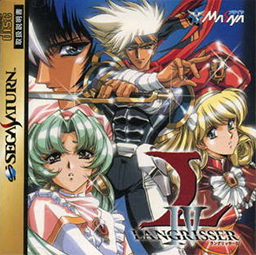
Langrisser IV is the sequel to Langrisser III, and has never been released outside Japan. There is a fan-translated English patch available for the PlayStation version.

VR Troopers is a 1995 fighting game based on the American syndicated television series of the same name that itself used elements from several different Japanese tokusatsu shows from the Metal Hero Series. The fighting game was developed by Syrox Developments and published by Sega. The game was released on Sega Mega Drive, and the Sega Game Gear. A release for the Super Nintendo was planned but got cancelled.

Ultraman: Towards the Future is a multi-platform fighting video game based on the contemporary Ultra Series, Ultraman: Towards the Future. This game has received mostly negative reviews due to its high difficulty and its poor graphics.
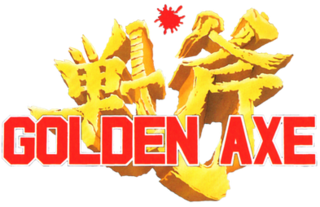
Golden Axe is a series of side-scrolling, beat 'em up, arcade video games developed by Sega. The series takes place in a medieval-fantasy world where several heroes have the task of recovering the legendary Golden Axe, the mainstay element of the series.
Mighty Warriors is an adventure board game created by Games Workshop in 1991 and set in the Warhammer Fantasy fictional universe. The core rules allowed players to explore dungeons, which were randomly generated, and fight monsters, also randomly generated. This was a simplified version of Advanced Heroquest.

Hero: 108 is a British/Taiwanese/Canadian/Chinese animated television series that was aired on Cartoon Network and the Cartoon Network international cable network, and Kabillion OnDemand channel in the United States that was created by Yang-Ming Tarng. The series was produced by MoonScoop, in association with Gamania, Hong Ying Animation, Telegael Teoranta, and Turner Entertainment Networks International Ltd. It premiered on March 1, 2010.
AdventureQuest Worlds is a browser-based massively multiplayer online role-playing game (MMORPG) released by Artix Entertainment in October 2008.

For Honor is a 2017 action video game developed and published by Ubisoft for Microsoft Windows, PlayStation 4, and Xbox One. The game allows players to play the roles of historical forms of soldiers and warriors, including knights, samurai, vikings and since October 2018 the Chinese Wu Lin, within a medieval setting, controlled using a third-person perspective.



